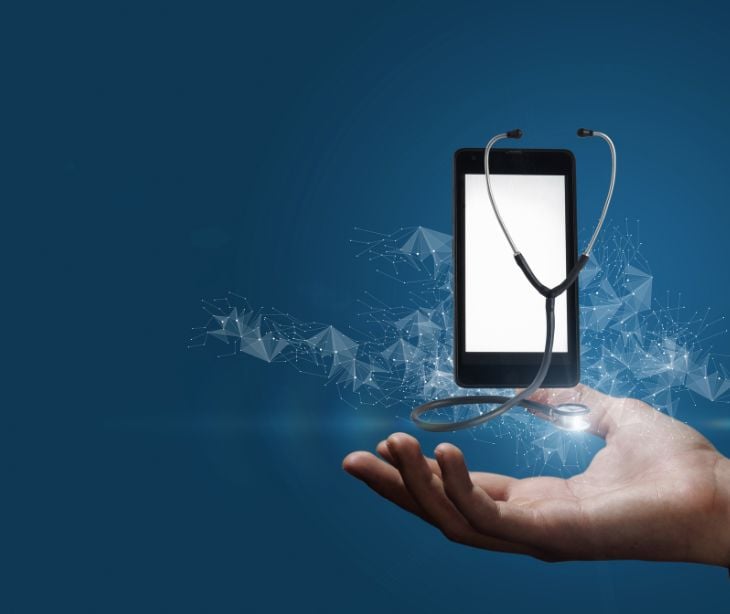
Strategies for mobile device management and HIPAA compliant communication involve implementing containerization technology, using secure email services, and opting for HIPAA compliant messaging apps. Additionally, healthcare organizations should integrate clear MDM policies with communication protocols and provide comprehensive staff training on HIPAA regulations and security best practices.
Mobile device management (MDM) and HIPAA compliance
Mobile device management (MDM) is used in healthcare to protect smartphones and tablets and ensure the security of patient data. These devices allow healthcare providers to access patient records and communicate efficiently with one another. However, if not managed properly, they can be a security risk. A study on smartphone use and security challenges in hospitals stated that "Smartphones are an important part of digital support for physicians in everyday clinical practice. To minimize the risks of use, technical and organizational measures should be taken by the hospital management".
MDM solutions allow IT administrators to control and secure these devices effectively. The HIPAA Security Rule requires strict security measures to safeguard electronic patient data, and MDM can be used to ensure compliance with this requirement.
Strategies for securing mobile devices and communication
- Implement containerization: Use MDM with containerization technology to create distinct, secure workspaces on devices, effectively segregating personal and work-related data. This ensures that patient information remains safeguarded, even if the device is compromised.
- Encrypted email services: Choose HIPAA compliant email services with encryption to secure emails at rest and in transit. These services ensure the protection of sensitive information and provide features such as spam filtering for added security.
- Use secure messaging apps: Opt for HIPAA compliant text messaging apps with encryption and multi-factor authentication features. These apps ensure secure communication channels, reducing the risk of data breaches and unauthorized access to patient information.
Implementing mobile device management policies
MDM policies should comprehensively address device security, app management, and data encryption protocols. Clear guidelines ensure consistency in compliance efforts and help mitigate security risks associated with mobile device usage.
Integrating MDM policies with communication protocols ensures alignment with HIPAA regulations. Healthcare organizations can maintain compliance and safeguard patient data by ensuring all mobile devices comply with HIPAA requirements.
Practices for maintaining HIPAA compliance
- Regular policy updates: Establish a process for regularly reviewing and updating MDM policies and security protocols to address emerging threats and changes in regulations.
- Conduct audits and assessments: Regularly audit and assess the organization's MDM implementation and HIPAA compliance efforts. This includes evaluating device configurations, access controls, and employee adherence to security protocols. Identify areas for improvement and take corrective action as needed.
- Vendor management: Ensure third-party vendors providing MDM solutions or communication platforms adhere to HIPAA requirements. Conduct due diligence when selecting vendors, establish business associate agreements (BAAs) with them, and regularly review their security practices to mitigate potential risks.
- Incident response plan: Develop and maintain an incident response plan outlining procedures for responding to security incidents involving mobile devices or communication channels. This includes protocols for reporting breaches, conducting investigations, and notifying affected parties as required by HIPAA.
- Employee feedback and engagement: Encourage employees to provide feedback on MDM policies and security measures. Engage employees in the compliance process by soliciting their input and addressing their concerns.
FAQs
Are there HIPAA requirements for mobile device management?
Yes, HIPAA requires healthcare organizations to implement security measures such as encryption, access controls, and remote wipe capabilities on mobile devices to protect patient health information.
Can personal devices be used for work-related tasks in healthcare?
Yes, but healthcare organizations must implement bring your own device (BYOD) policies and MDM solutions to ensure that personal devices comply with HIPAA regulations and maintain security standards.
Read more: Best practices for implementing a secure BYOD policy
How can I ensure MDM solutions are compatible with existing electronic health record (EHR) systems?
Healthcare organizations should collaborate with their IT departments and EHR vendors to ensure that MDM solutions seamlessly integrate with existing systems. This may involve conducting compatibility tests, implementing necessary updates or patches, and training staff on MDM in conjunction with EHR systems.
Subscribe to Paubox Weekly
Every Friday we'll bring you the most important news from Paubox. Our aim is to make you smarter, faster.




